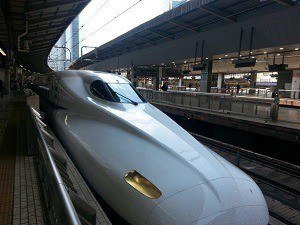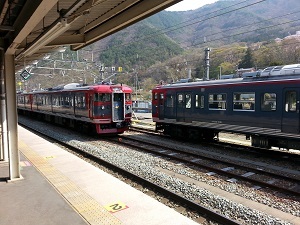JCT Tips - Rail Passes



This page is left as a relic of the National JR Pass price increase of October 2023. Currently, only fast paced and/or and extensive travel will make the current pass a viable option for visitors to Japan. There are some good value regional passes, but for the majority of visitors, the national pass should not be considered.
JCT stopped using rail passes at the beginning of 2023 prior to the price increase as they had become increasingly cumbersome and inefficient. We do not regret that decision.
One of the best things a visitor to Japan can get is a rail pass - locals view them with envy as they can provide unlimited travel on the rail network, including shinkansen all over the country. However, many people find the JR Pass and the regional passes confusing and are unsure if they should get them or not. For the tours JCT operates, we usually get nationwide passes as they provide an economic and simple way to get around the country, and we tend to travel a bit further than just a return Tokyo/Osaka trip.
This page deals with travel between cities rather than the local train, subway or metro passes that are available in different places around Japan. Some of those can be quite useful, and stored value cards (SUICA and PASMO) can be handy if you do not want to buy individual tickets all the time, but that is not too time consuming if you know where you are going.
The Short Version:
The JR pass comes in three durations: 7 days, 14 days and 21 days. Usage is counted in whole days, but if you start a journey on the last day of your pass, you can complete the journey even if it runs past midnight. It is most likely to be the correct pass to get if you are travelling between Tokyo and Kyoto or Osaka (that is, between east and west Japan) because the regional passes do not cover both of these cities under one pass.
Green Car Pass: Provides a higher level of comfort. On shinkansen the seats are wider, more likely to have carpet, and the cars are better positioned so when you stop at stations, the exits are closer.
The cheapest adult pass is Y29,110. If you are travelling Narita to Tokyo and then to Kyoto or Osaka return, this is cheaper than individual tickets (Y33,640 for Kyoto). However, if you arrive at Tokyo and depart Osaka, then you do not get the return trip, so it is not as valuable.
Note: JapanRail are increasing the price of the national pass for the first time in over a decade. The rates are increasing approximately 70% making the JRP much less valuable.
|
Type:
|
Green
|
Ordinary
|
||
|
Duration
|
Adult
|
Child
|
Adult
|
Child
|
|
7-day
|
38,880 YEN
|
19,440 YEN
|
29,110 YEN
|
14,550 YEN
|
|
14-day
|
62,950 YEN
|
31,470 YEN
|
46,390 YEN
|
23,190 YEN
|
|
21-day
|
81,870 YEN
|
40,930 YEN
|
59,350 YEN
|
29,670 YEN
|
The Longer Version:
When considering if a JR Pass is worth it, you need to have a look at where you are going and over what duration. Fares for different trips around the Japanese rail network are available to pull up on Hyderdia.com, but this can take quite a while to work out different combinations.
The following shinkansen examples are pretty typical one-way journeys (adult, ordinary, reserved seat):
|
|
|
|
|
|
|
|
|
|
|
|
The longest shinkansen journey is between Kagoshima-Chuo to Shin-Hakodate is basically one end of the line to the other, 2,326 km for Y48,2200. That involves two transfers and a little under 12 hours, but at an average speed of 200 km/hour including stops is still pretty rapid.
The following local train examples are useful to fill in some of the gaps in the shinkansen network (adult, ordinary, reserved seat):
|
|
|
|
|
|
|
|
|
|
|
|
A couple of examples:
#1: Our July 2015 train tour took us from Tokyo to Aomori, Akita, Niigata, Kanazawa, Kyoto, Nagoya and back to Tokyo over 14 days. The rail pass cost of Y46,390 wasampless than the individual trips. Using the above tables gives an approximate cost of Y49,730 (Tokyo to Shin-Aomori: Y17,550, Aomori to Akita: Y3,870, Akita to Niigata: Y7,410, Kanazawa to Kyoto: Y7,100, Kyoto to Tokyo: Y13,800, and we still need to add in Niigata to Kanazawa).
The savings were actually larger because we included a day trip to Nagoya (Y11,580 return), a visit to Hirosaki from Aomori (Y1,340) and two of our guests went to Tokyo for shopping from Niigata (Y21,540 return). We cancelled a trip to Hiroshima due to weather (typhoon), but that would have been Y22,580, and the Y6,440 for the short ride from Akita to Kakunodate was also covered, as would have been a visit to Nikko on the last day of the pass validity (but shopping in Tokyo was chosen instead).
#2: For our September 2017 month long tour which covered a large part of the country we used two 14-day passes. While out main travel occurred on only 14 out of 28 days the basic trip would have cost Y144,500 but was covered by the Y93,000 cost of the rail pass. Again, we added in some extra side trips (like Kakunodate from Akita and Iwakuni from Hiroshima)